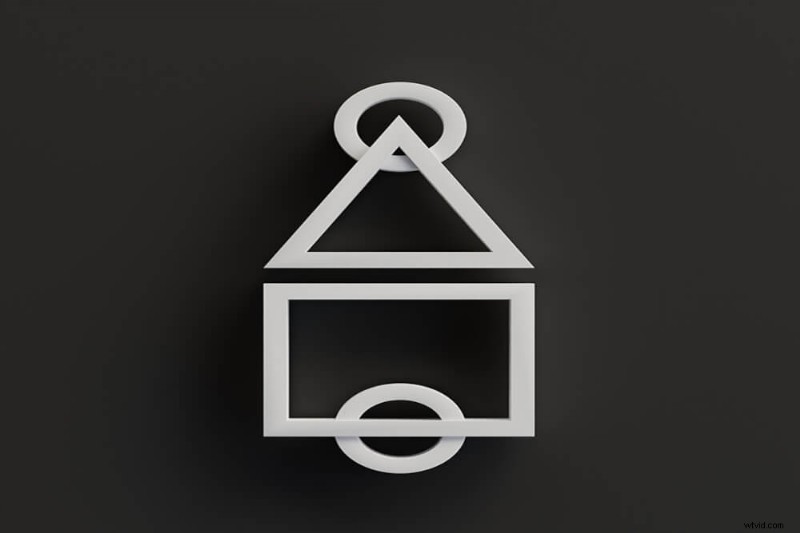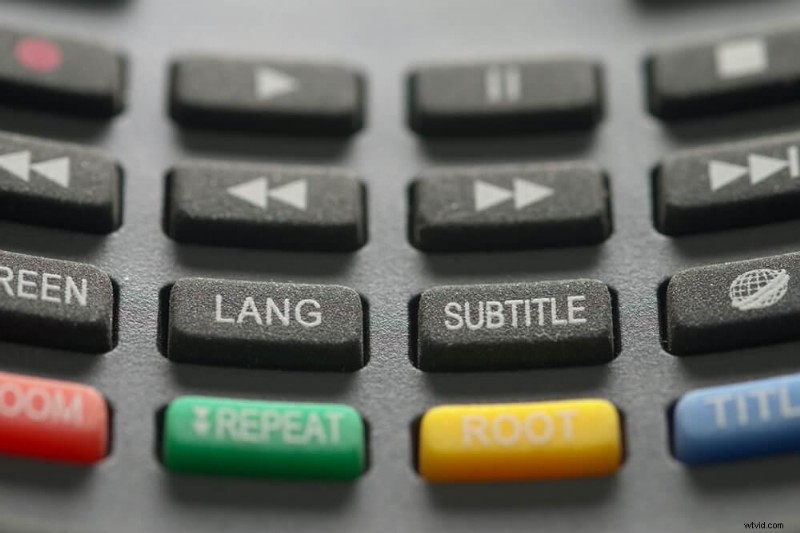De nieuwste hitserie van Netflix, Squid Game, heeft bewezen een instant schat aan entertainment te zijn voor zijn kijkers. In de show strijden 456 financieel wanhopige spelers om het prijzengeld ter waarde van $ 45 miljard - maar die spellen worden al snel dodelijk als ze tegen elkaar en andere kanshebbers zoals zijzelf vechten.
Het actievolle drama volgt een paar personages op hun zoektocht door deze dodelijke wedstrijden terwijl ze wanhopig proberen niet door iemand anders verslagen te worden of het risico lopen te worden uitgeschakeld voordat ze de overwinningsbaan bereiken met al deze buit op het spel.
Met een plot dat satire en melodrama vermengt, is Squid Game misschien wel een van de meest innovatieve, originele en langverwachte shows op Netflix. Dit boeiende verhaal over hoe ver mensen gaan voor geld is gebaseerd op verschillende spellen.
De zes spellen die de deelnemers speelden, zijn allemaal gebaseerd op Koreaanse kinderspellen die veel mensen al zouden kennen, zoals touwtrekken en rood licht/groen licht. Het laatste spel heet "inktvisspel".
The Plot:Squid Game

450 door schulden geteisterde mensen zetten hun leven op het spel om geld te winnen. Elke game heeft een andere uitkomst, en als je ook maar één game verliest, kost dat ze hun leven!
De show belicht de klassenkloof in Zuid-Korea met acht hoofdpersonages die een belangrijke rol spelen in alle zes rondes:van een bendebaas tot een ooit succesvolle zakenman die nu door de wet wordt gezocht voor diefstal van zijn klanten, van een migrerende fabrieksarbeider die zijn kans waagt om te winnen. miljoenen in deze dodelijke spellen aan een Noord-Koreaanse overloper en meer.
De show heeft lovende kritieken gekregen vanwege de spannende verhaallijn, uitstekende dialoog en meeslepend verhaal. Maar de enige klacht van sommige kijkers gaat over de slechte ondertitels in de show. De hitserie ligt onder vuur vanwege 'grove verkeerde vertalingen' in de ondertitels. Een taalexpert heeft gewaarschuwd dat de echte betekenis van de gebeurtenissen die in deze hitshow worden afgebeeld, verloren zou kunnen gaan, onder meer omdat de tekst op het scherm onnauwkeurig is.
Zoals bij alle vertalingen, moeten betekenissen soms worden aangepast en sommige details gaan verloren in de vertaling omdat talen niet rechtstreeks kunnen worden vertaald. Ondertitels missen echter vaak vitale informatie of grove verkeerde vertalingen als gevolg van:
Ondertitelingsfouten
Ondertitelingsfouten in films en tv-programma's komen zo vaak voor dat bijna wordt verwacht dat ze deel uitmaken van de kijkervaring. Wat de meeste kijkers zich echter niet realiseren, is dat deze fouten vaak veel verder gaan dan verkeerd gespelde woorden en slechte grammatica; vaak bevatten ondertitels inhoud die niet bedoeld was voor een buitenlands publiek.

Tot op zekere hoogte is het begrijpelijk waarom dit gebeurt. Buitenlandse distributeurs huren in ontwikkelingslanden vaak goedkope arbeidskrachten in om te besparen op ondertitelingskosten. Als een slecht betaalde werknemer de taak krijgt om een film van twee uur te vertalen en te ondertitelen, zal hij of zij begrijpelijkerwijs manieren vinden om zo efficiënt mogelijk om te gaan met tijd en moeite. En als je centen per uur betaald krijgt, ga je dan ruzie maken met je werkgever over correcte grammatica?
Er is echter niet veel online speurwerk voor nodig voordat fans die vreemde talen kennen, nogal interessante fouten tegenkomen die verder gaan dan alleen ontbrekende letters. Af en toe horen we over fans die de voorkeur geven aan ondertiteling boven nasynchronisatie, omdat ze vinden dat het nauwkeuriger is.
Deze overtuiging komt waarschijnlijk voort uit de gangbare praktijk om inhoud of dialogen te verwijderen die beledigend kunnen zijn voor het buitenland waar het materiaal zal worden verspreid, evenals het corrigeren van kleine grammatica- en spelfouten die het gevolg zijn van tijdsdruk bij de productie van ondertitels. Maar sommige zijn niet zo gemakkelijk te rechtvaardigen…
Waarom komen ondertitelingsfouten zo vaak voor?
We weten niet precies hoeveel ondertitelingsfouten er elk jaar worden gemaakt, maar het cijfer ligt waarschijnlijk in de tientallen miljoenen. Veel ondertitelde inhoud is afkomstig uit verschillende landen, dus het is niet verwonderlijk dat de betrokken talen vaak Engels en niet-Engels zijn.
Dit betekent dat er veel meer kans is op fouten dan wanneer alles in slechts één taal zou zijn. Franse filmproducenten hebben bijvoorbeeld toegang tot Gallische audiovisuele ondersteuning in plaats van hun toevlucht te nemen tot Amerikaanse of Canadese vrienden voor hulp bij ondertiteling - een voordeel dat niet geldt voor hun Indiase tegenhangers die zich moeten wenden tot moedertaalsprekers buiten India voor hulp bij Engelse ondertiteling.
Het feit dat niet-moedertaalsprekers doorgaans minder betaald krijgen dan professionals, zou de problemen des te waarschijnlijker maken. Bovendien, hoe onbekender een taal is, hoe groter het risico op fouten.
Letterlijke vertalingen
Anderstaligen hanteren soms een te letterlijke vertaling van hun eigen taal naar het Engels. This can lead to odd sentences that may convey the meaning, but not the style or rhythm of the original.
In some cases, it could be argued that nothing is lost - apart from a few superfluous words which could have been better used elsewhere. However, in most instances an overly literal approach results in “noise” – stuff that’s surplus to requirements and should have been cut out.
Punning Subtitles
A subtitler has a limited space through which to express themselves so puns are likely to pose problems.
Subtitles often try to convey the same feeling as the original dialogue, but puns rarely translate well. As a result, it’s common for subtitles to lose their “punch”. In addition, the subtitler has to pick from a handful of possible substitutions that can sometimes make little sense.
Lack of Training
Subtitling is an art and a craft which takes time to learn. Even native speakers need years of experience before they can turn out error-free subtitles.
It’s not surprising, therefore, that non-natives are going to take even longer - especially if they receive little or no training prior to employment. In fact, many will probably never become competent subtitlers despite being immersed in their source language for years on end!
Tight Deadlines

The high demand for subtitles means most providers aren’t about to ask their staff to submit work late even if there are problems with quality control. So, deadlines are usually tight leading to an ever-increasing risk of mistakes creeping into the final product.
There are many reasons why subtitles go wrong but these are probably the main ones… which hopefully helps explain why there’s so much incorrect subtitling out there!
Poor Timing
There are various timing methods for adjusting subtitles to fit the dialogue. These include:
They all work well, but usually it’s necessary to re-time one or more lines because of errors or fluctuations in the source. This changes the length of time that the subtitle appears onscreen - often resulting in a mismatch with what’s being said. It’s not surprising therefore that this is another common mistake!
Subtitles also have to deal with overlapping speech which can be difficult if there are problems aligning subtitles with their corresponding audio track. The only solution is to delay showing subtitles until after they’ve spoken - which again can result in timing errors.
Sticking to Exact Phrasing
Some subtitle formats allow the creator to use exact English phrases verbatim . This is intended only for places where the dialogue is being quoted or sung - but some subtitlers see it as an opportunity to ignore correct translation principles by sticking to their own language style.
They figure that if they’re close enough, viewers will understand what’s being said even though it may be incorrect. It might not affect everyone, but for those it does impact, it can lead to major misunderstandings!
The solution of course is for providers to specify that the English should follow the time codes rather than just repeat everything word-for-word.
Subtitler Poor Spelling and Grammar
It’s widely accepted that good spelling and grammar are vital if subtitles are to be understood. Unfortunately, there are subtitler who believe it’s OK to ignore them - especially when typing at speed.
So, this is yet another common mistake that risks “rubbing off” on others who read the translations of their work! Subtitles must not only look right but also sound right which means correct punctuation is also important.
Think about what you’re writing and check for mistakes - then sleep on it before making final edits because you could always miss something!
Chewing the Scenery
Some subtitlers want to make a big impression by using different styles of translation depending upon whether they’re dealing with serious or humorous material.
They want viewers to see that they’re clever, inventive and dynamic. It’s interesting to note that nobody even notices when native speakers make mistakes in their speech - but subtitles are under the microscope all the time so everyone sees them!
As a result, if you want to be taken seriously as a subtitler, it’s much better to stick with one style of translation especially when working with serious material because audiences will assume minor inaccuracies are due to transcription errors rather than your lack of skill!
Dubbing vs. Subtitles
It used to be assumed that viewers would always prefer dubbed versions over subtitles for foreign language content. However, audience demographics have changed considerably since then making it far easier for providers to get away with subtitling almost anything and still make money.
This has brought subtitling to the forefront and audiences now expect it for all foreign language content. Unfortunately, some providers still think they can get away with dubbing for anything considered “high-brow” - such as documentaries, art house movies or educational programs about science or history.
Clearly this is not the case as people want correct translations that they can read at their own speed without having to listen carefully too. Sadly, they’re likely to switch off pretty quickly if you don’t provide them with what they want so play safe and subtitle your material properly!
What’s the Difference Between Closed Captions and Subtitles?
While both subtitles and closed captions are displayed text that transcribe video to text, translate or otherwise convey the audio portion of television programs, movies and video games to individuals who cannot hear them, there are important differences between the two.
Closed captioning may also include sound effects or other sounds in order to better convey important information about ambient noises - a feature often missing from subtitles.
Subtitles translate video dialogues and on-screen text into a language that the viewer understands, while closed captioning describes sounds and sound effects as they occur, which makes them particularly useful for individuals who are deaf or hard of hearing.
The benefits of closed captioning are for people who are deaf or hard of hearing, while subtitles are intended to assist people who speak a language other than the one spoken in the video.
SubtitleBee Offers Accurate Subtitles and Captions for All Your Projects
At SubtitleBee, we are passionate about providing high-quality subtitles for users of all types. Whether it’s educational material, film or television content, we offer subtitles and translations in 100+ languages.
In today’s world of on-demand, streaming services and YouTube videos it is more important than ever to have high quality subtitles. In particular foreign languages can tremendously expand an audience base as well boost search rankings in countries where they aren’t available - which will increase discoverability for viewers across the globe!
Our easy-to use subtitling and audio transcription service guarantees high quality translations at an affordable rate, saving you time. We have subtitles in over 100 languages that will get your message across no matter what the occasion.
For more information, feel free to contact us today!
